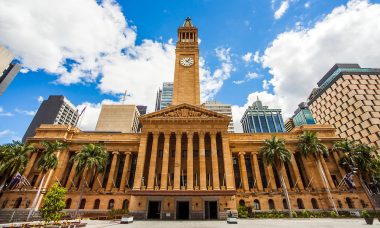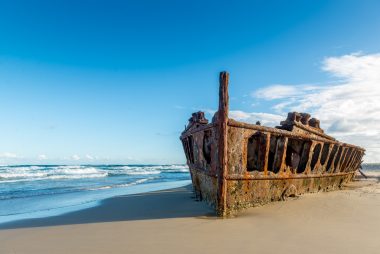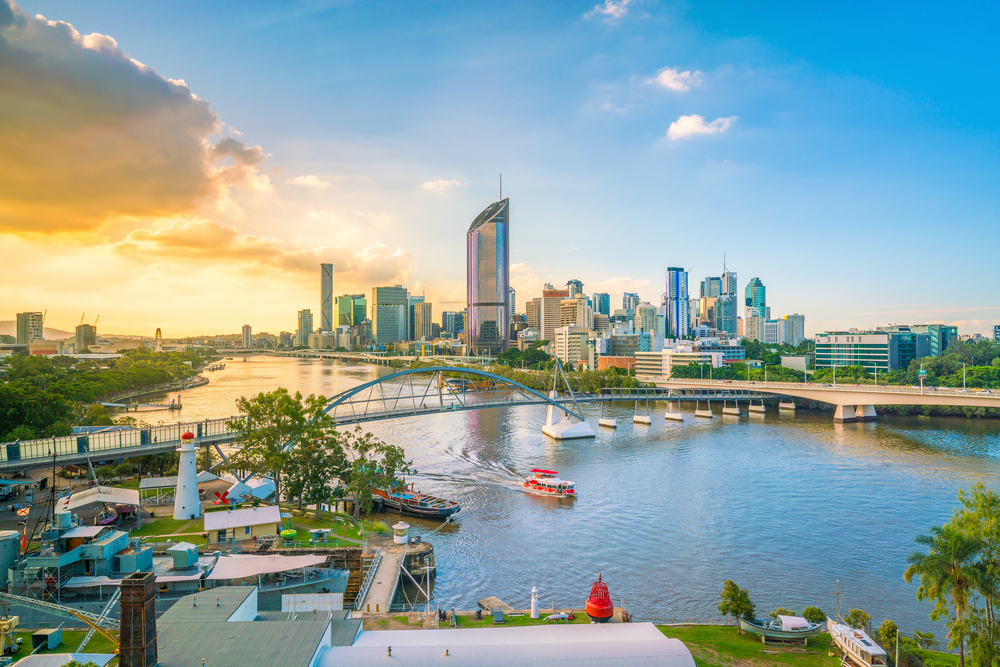It took less than 150 years from the founding of a lonely penal colony on the Brisbane River to the present day: Brisbane is a modern city that is considered a tourist hotspot in Australia because of its fantastically beautiful, sunlit location by the sea and the numerous holiday paradises all around.
What’s more, the entire eastern part of Australia is a popular hub for visitors from all over the world. First and foremost, it is the popular states of Queensland and New South Wales that make up Australia’s east. Quite the opposite to the Australian “Wild West”, which is so sparsely populated that a journey from one place to another can sometimes take day trips. On the east coast, on the other hand, things are much livelier – and one attraction follows the other.
There are also some climatic differences to other parts of the country: For example, the pronounced subtropical climate in Australia’s east ensures very pleasant temperatures – all year round. Mountain ranges rise up to 2,200 meters in height.
So: Full marks for Brisbane! While the cosmopolitan city of Sydney scores with its wealth of sights, visitors to Brisbane are also attracted to cultural highlights en masse.
Brisbane – Australia’s third largest city

Brisbane, with its approximately 2.2 million inhabitants, is the capital of the particularly popular state of Queensland. Brisbane became popular due to its comprehensive range of cultural attractions: Especially as a concert lover or theater lover, you will appreciate the rich offers of Brisbane’s cultural sites.
As the third largest city behind the metropolises of Sydney and Melbourne , Brisbane is a particularly popular destination for tourists from all parts of the world. Brisbane’s internationality is just as characteristic as the cityscape, which is characterized by many subcultures. In addition, a strong, important cultural scene has been established, which is a magnet for artists from all parts of the world.
Brisbane’s nightlife is also lively and colourful. CBD, Brisbane’s Central Business District, is located on a peninsula in a bend of the Brisbane River. The city center is quite manageable in terms of area with only about 2.2 square kilometers, but the oversupply of sightseeing highlights and shopping offers fascinates all visitors so much that the individual time budget quickly becomes insignificant for some visitors. All streets in the CBD are named after members of the British royal family, such as the famous Queen Street with the huge Queen Street Mall. Queen Street stretches from northeast to southwest and is considered Brisbane’s most prestigious boulevard.
Lots of leisure fun
Shopping in the city, visiting art exhibitions, galleries and theatre performances, boat trips with many other people or a romantic holiday for two on a summer night: Brisbane overwhelms its visitors with interesting offers for big and small leisure fun:

Culture lovers and art lovers will find numerous galleries, theatres and museums of various genres in the renowned Queensland Cultural Centre. While the South Bank Parklands offer wonderful opportunities for swimming, lots of sports fun, walks and bike rides or simply relaxing, visits to the Fraser Islands are a “must” for visitors to Brisbane:
The Fraser Islands are located off Queensland and are considered the largest sand island in the world with a longitudinal extension of over 120 km. There, holidaymakers can expect sandstone cliffs with great vantage points, a shipwreck, fascinating flora and fauna and unique dream beaches.
Brisbane’s dream beaches
Measured from Brisbane’s city centre, it’s less than 20 kilometres to the Pacific coast and the beautiful beaches around the city. Although Streets Beach in the South Bank Parklands offers beautiful beach life, visits to the sea beaches in Brisbane’s north and south are highly recommended: The Sunshine Coast is particularly beautiful and very popular. Along the way, visitors pass through Moreton Bay and Bribie Island, as well as the Gold Coast’s swimming beaches. The Gold Coast is considered a prime hotspot for the surfing community. There are also many shopping opportunities and a nightlife that is as amusing as it is exciting.
Great climate
A mild south-easterly trade wind is considered characteristic of the mild, warm climate in eastern Australia. Further inland, mountain ranges rise up to 2,200 metres high, which is why there is also uphill rain in the region from time to time. There are no pronounced temperature fluctuations between day and night. While there are temperature fluctuations behind the mountains near Canberra , Brisbane has a slightly humid, subtropical east-side climate. While the summer months from November to April are characterized by precipitation and warmth, in winter from May to October, as everywhere else in the southern hemisphere of the world, there is a dry climate with mild temperatures. On average, there is rain on 125 days a year and the sun shines for an average of 3,000 hours a year.
Overall, January is considered the warmest month and July the coldest month. The average annual high temperature is 26.4 °C. The lowest temperature is still a wonderfully mild 16.2 °C. The average water temperature of the sea is 24 °C. These are all the best conditions for an unforgettable holiday in and around Brisbane


